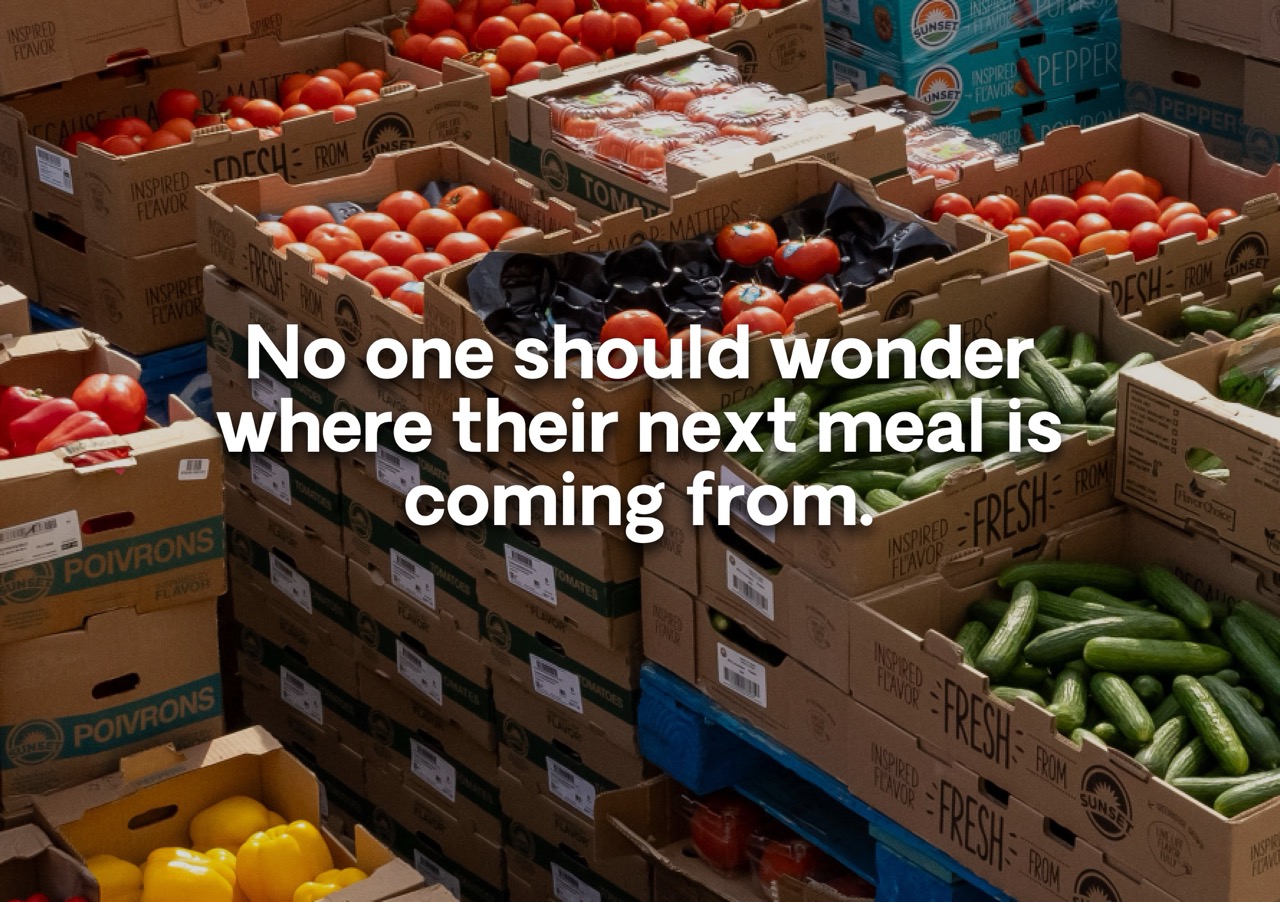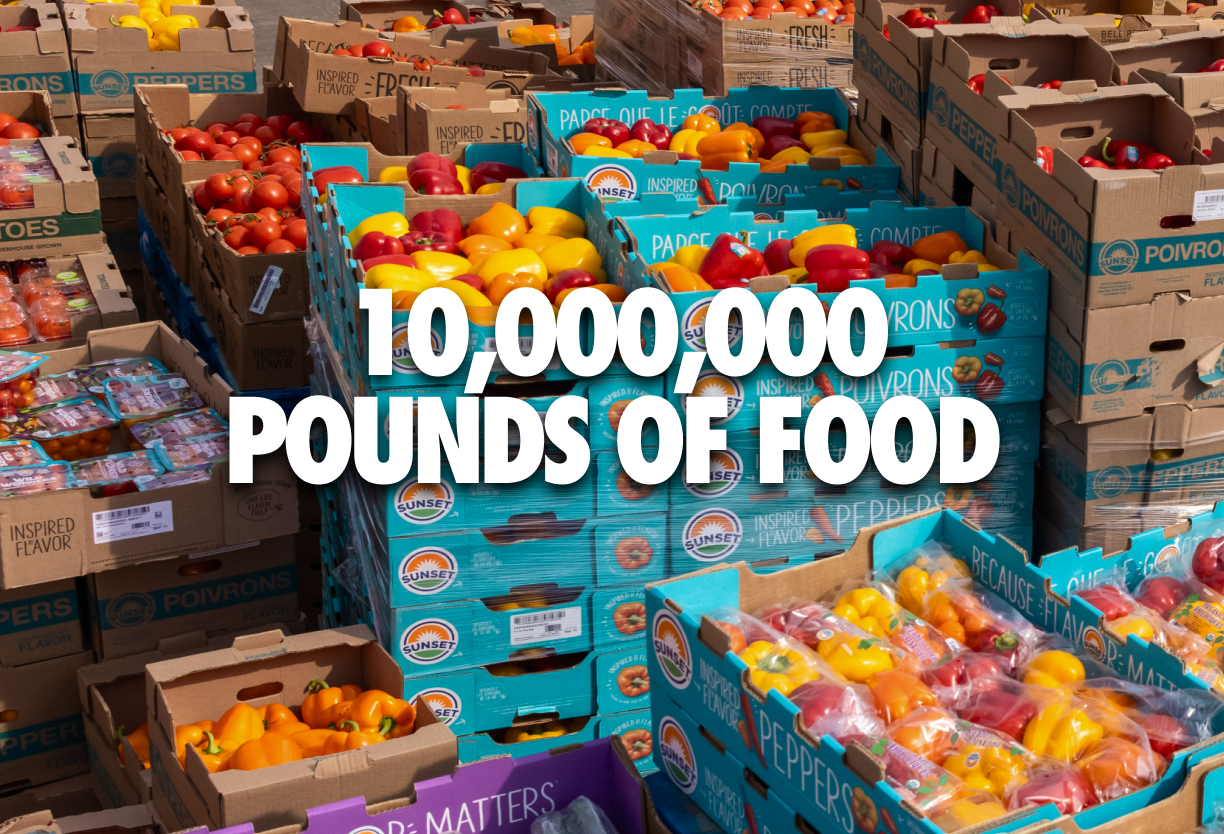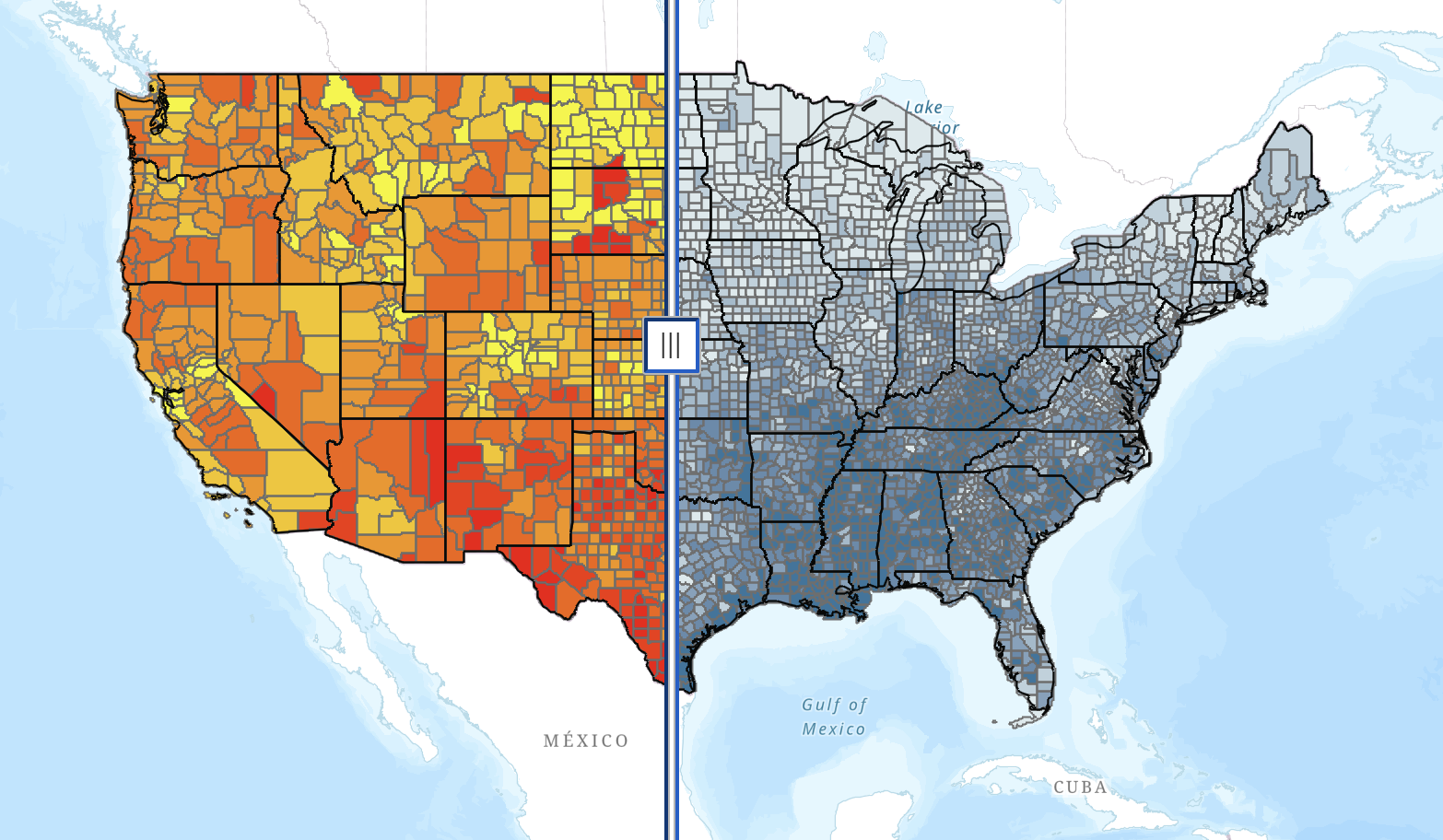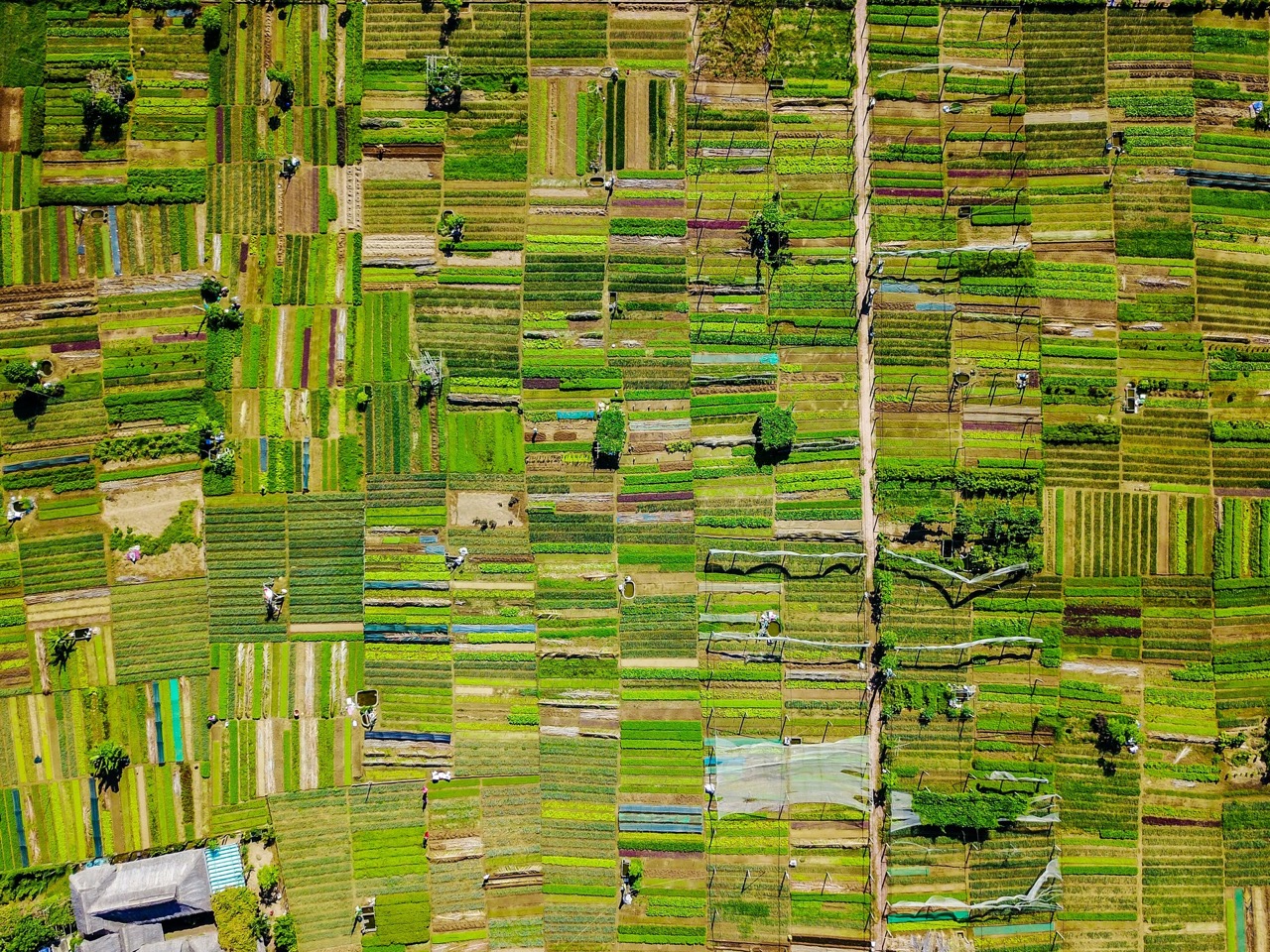Hundreds of feet below the ground in Missouri, there are hundreds of thousands of pounds of American cheese. Deep in converted limestone mines, caves kept perfectly at 36 degrees Fahrenheit store stockpiles of government-owned cheese comprising the country’s 1.4 billion pounds of surplus cheese. How we got to this point is a long story, and it starts during a national dairy shortage in the 1970s.
In response to this dairy shortage and 30% inflation on dairy products, the government intervened, resulting in prices falling drastically. So, in 1977, then-President Jimmy Carter decided to pour money into the dairy industry to motivate production and alleviate the crisis. The government set a new policy to subsidize dairy, providing two billion dollars to the industry over the next four years. While this plan was welcome to dairy farmers, it also primed them for overproduction.
Farmers who had been struggling were motivated to produce as much dairy as they could, knowing that whatever was not sold on the market could likely be purchased by the government, and it was. By the early 1980s, the government owned over 500 million pounds of cheese. The reason the dairy product was converted to cheese was because it has a longer shelf life than other dairy products as the government searched for solutions to the problem it had created.
This led to Ronald Reagan enacting public distribution of the government cheese in 1981. That year then-Secretary of Agriculture, John R. Block showed up at the White House with a molding five-pound block of cheese and told reporters, “We’ve got 60 million of these that the government owns… It’s moldy, it’s deteriorating… we can’t find a market for it, we can’t sell it, and we’re looking to give some of it away.” Thus, “government cheese” was born, and the federal government distributed these cheese blocks through the Temporary Emergency Food Assistance Program (TEFAP). It was given away for free by pickup to people at food banks, community centers, and so on. “Government cheese” became a totem of American culture, signaling both class and nostalgia. It is referenced in Kendrick Lamar and Jay-Z songs, and in 2017, Snoop Dogg even taught Martha Stewart how to cook with it on their show.

Flash forward to 2019, when the government again found itself storing cheese, this time to the tune of 1.4 billion pounds. Amid trade disputes and declining dairy consumption nationally, the American government has been subsidizing and stockpiling America’s surplus cheese. According to the USDA, American milk consumption has dropped from 275 pounds per capita in 1975 to 149 pounds per capita in 2017.
Though demand is declining, production is not. It has risen 13% since 2010. In 2016, the American dairy industry dumped a whopping 43 million gallons of milk into fields, animal feed, and anaerobic lagoons. Though this waste is staggering, it is also not representative of the size of the surpluses being run by dairy farms. The dairy industry received 43 billion and 36.3 billion dollars in 2016 and 2017, respectively, from the federal government. In 2018, 42% of revenue for U.S. dairy producers came from some kind of government support. It is important to note that the dairy lobby is largely responsible for influencing politics to dedicate this money for the industry, and the money mostly goes to the big dairy companies that fund the lobby, leaving smaller operations to fend for themselves in the increasingly competitive market.
Additionally, to help move dairy products that are less and less in demand, the Clinton Administration started Dairy Management Inc. in the 1990s. With an annual budget of $140 million, this offshoot of the Dept. of Agriculture works to get Americans to consume more dairy, even though the Dept. of Health and Human Services has conducted studies showing dairy is not very healthy to be consumed regularly, and 36% of Americans are lactose intolerant. This intolerance has been proven to be significantly higher for minority groups, with 75% of African Americans experiencing lactose intolerance, 51% of Latinos, and 80% Asian Americans, contrasted by just 21% of Caucasians. Dairy Management Inc. nonetheless launches campaigns like the infamous “Got Milk?” ads, Taco Bell cheesy crust, Taco Bell double steak quesadillas, and milk as part of the federal school lunch program. They even bailed Domino’s out after the 2010 recession as part of an attempt to keep Americans eating cheese.

It seems that we should not be asking people if they “got milk?” and instead think about how to use up the existing cheese supply without adding to it. The funds used to subsidize the overproduction of dairy and maintain “cheese caves” may be better spent elsewhere. Smaller farms should be included when the government does subsidize dairy, and there may be creative solutions to avoid maintaining caves of cheese below ground. It is important that special interests do not acquire billions annually for an industry that knowingly overproduces, not to mention pollutes the environment, in the face of declining consumption. Instead, the government should help these farmers transition to more in-demand crops instead of pushing less healthy ones into the stomachs of Americans.
< Back
Hundreds of feet below the ground in Missouri, there are hundreds of thousands of pounds of American cheese. Deep in converted limestone mines, caves kept perfectly at 36 degrees Fahrenheit store stockpiles of government-owned cheese comprising the country’s 1.4 billion pounds of surplus cheese. How we got to this point is a long story, and it starts during a national dairy shortage in the 1970s.
In response to this dairy shortage and 30% inflation on dairy products, the government intervened, resulting in prices falling drastically. So, in 1977, then-President Jimmy Carter decided to pour money into the dairy industry to motivate production and alleviate the crisis. The government set a new policy to subsidize dairy, providing two billion dollars to the industry over the next four years. While this plan was welcome to dairy farmers, it also primed them for overproduction.
Farmers who had been struggling were motivated to produce as much dairy as they could, knowing that whatever was not sold on the market could likely be purchased by the government, and it was. By the early 1980s, the government owned over 500 million pounds of cheese. The reason the dairy product was converted to cheese was because it has a longer shelf life than other dairy products as the government searched for solutions to the problem it had created.
This led to Ronald Reagan enacting public distribution of the government cheese in 1981. That year then-Secretary of Agriculture, John R. Block showed up at the White House with a molding five-pound block of cheese and told reporters, “We’ve got 60 million of these that the government owns… It’s moldy, it’s deteriorating… we can’t find a market for it, we can’t sell it, and we’re looking to give some of it away.” Thus, “government cheese” was born, and the federal government distributed these cheese blocks through the Temporary Emergency Food Assistance Program (TEFAP). It was given away for free by pickup to people at food banks, community centers, and so on. “Government cheese” became a totem of American culture, signaling both class and nostalgia. It is referenced in Kendrick Lamar and Jay-Z songs, and in 2017, Snoop Dogg even taught Martha Stewart how to cook with it on their show.

Flash forward to 2019, when the government again found itself storing cheese, this time to the tune of 1.4 billion pounds. Amid trade disputes and declining dairy consumption nationally, the American government has been subsidizing and stockpiling America’s surplus cheese. According to the USDA, American milk consumption has dropped from 275 pounds per capita in 1975 to 149 pounds per capita in 2017.
Though demand is declining, production is not. It has risen 13% since 2010. In 2016, the American dairy industry dumped a whopping 43 million gallons of milk into fields, animal feed, and anaerobic lagoons. Though this waste is staggering, it is also not representative of the size of the surpluses being run by dairy farms. The dairy industry received 43 billion and 36.3 billion dollars in 2016 and 2017, respectively, from the federal government. In 2018, 42% of revenue for U.S. dairy producers came from some kind of government support. It is important to note that the dairy lobby is largely responsible for influencing politics to dedicate this money for the industry, and the money mostly goes to the big dairy companies that fund the lobby, leaving smaller operations to fend for themselves in the increasingly competitive market.
Additionally, to help move dairy products that are less and less in demand, the Clinton Administration started Dairy Management Inc. in the 1990s. With an annual budget of $140 million, this offshoot of the Dept. of Agriculture works to get Americans to consume more dairy, even though the Dept. of Health and Human Services has conducted studies showing dairy is not very healthy to be consumed regularly, and 36% of Americans are lactose intolerant. This intolerance has been proven to be significantly higher for minority groups, with 75% of African Americans experiencing lactose intolerance, 51% of Latinos, and 80% Asian Americans, contrasted by just 21% of Caucasians. Dairy Management Inc. nonetheless launches campaigns like the infamous “Got Milk?” ads, Taco Bell cheesy crust, Taco Bell double steak quesadillas, and milk as part of the federal school lunch program. They even bailed Domino’s out after the 2010 recession as part of an attempt to keep Americans eating cheese.

It seems that we should not be asking people if they “got milk?” and instead think about how to use up the existing cheese supply without adding to it. The funds used to subsidize the overproduction of dairy and maintain “cheese caves” may be better spent elsewhere. Smaller farms should be included when the government does subsidize dairy, and there may be creative solutions to avoid maintaining caves of cheese below ground. It is important that special interests do not acquire billions annually for an industry that knowingly overproduces, not to mention pollutes the environment, in the face of declining consumption. Instead, the government should help these farmers transition to more in-demand crops instead of pushing less healthy ones into the stomachs of Americans.
Cheese Caves and Food Surpluses: Why the U.S. Government currently stores 1.4 billion lbs of cheese
Hundreds of feet below the ground in Missouri, there are hundreds of thousands of pounds of American cheese. Deep in converted limestone mines, caves kept perfectly at 36 degrees Fahrenheit store stockpiles of government-owned cheese comprising the country’s 1.4 billion pounds of surplus cheese. How we got to this point is a long story, and it starts during a national dairy shortage in the 1970s.
In response to this dairy shortage and 30% inflation on dairy products, the government intervened, resulting in prices falling drastically. So, in 1977, then-President Jimmy Carter decided to pour money into the dairy industry to motivate production and alleviate the crisis. The government set a new policy to subsidize dairy, providing two billion dollars to the industry over the next four years. While this plan was welcome to dairy farmers, it also primed them for overproduction.
Farmers who had been struggling were motivated to produce as much dairy as they could, knowing that whatever was not sold on the market could likely be purchased by the government, and it was. By the early 1980s, the government owned over 500 million pounds of cheese. The reason the dairy product was converted to cheese was because it has a longer shelf life than other dairy products as the government searched for solutions to the problem it had created.
This led to Ronald Reagan enacting public distribution of the government cheese in 1981. That year then-Secretary of Agriculture, John R. Block showed up at the White House with a molding five-pound block of cheese and told reporters, “We’ve got 60 million of these that the government owns… It’s moldy, it’s deteriorating… we can’t find a market for it, we can’t sell it, and we’re looking to give some of it away.” Thus, “government cheese” was born, and the federal government distributed these cheese blocks through the Temporary Emergency Food Assistance Program (TEFAP). It was given away for free by pickup to people at food banks, community centers, and so on. “Government cheese” became a totem of American culture, signaling both class and nostalgia. It is referenced in Kendrick Lamar and Jay-Z songs, and in 2017, Snoop Dogg even taught Martha Stewart how to cook with it on their show.

Flash forward to 2019, when the government again found itself storing cheese, this time to the tune of 1.4 billion pounds. Amid trade disputes and declining dairy consumption nationally, the American government has been subsidizing and stockpiling America’s surplus cheese. According to the USDA, American milk consumption has dropped from 275 pounds per capita in 1975 to 149 pounds per capita in 2017.
Though demand is declining, production is not. It has risen 13% since 2010. In 2016, the American dairy industry dumped a whopping 43 million gallons of milk into fields, animal feed, and anaerobic lagoons. Though this waste is staggering, it is also not representative of the size of the surpluses being run by dairy farms. The dairy industry received 43 billion and 36.3 billion dollars in 2016 and 2017, respectively, from the federal government. In 2018, 42% of revenue for U.S. dairy producers came from some kind of government support. It is important to note that the dairy lobby is largely responsible for influencing politics to dedicate this money for the industry, and the money mostly goes to the big dairy companies that fund the lobby, leaving smaller operations to fend for themselves in the increasingly competitive market.
Additionally, to help move dairy products that are less and less in demand, the Clinton Administration started Dairy Management Inc. in the 1990s. With an annual budget of $140 million, this offshoot of the Dept. of Agriculture works to get Americans to consume more dairy, even though the Dept. of Health and Human Services has conducted studies showing dairy is not very healthy to be consumed regularly, and 36% of Americans are lactose intolerant. This intolerance has been proven to be significantly higher for minority groups, with 75% of African Americans experiencing lactose intolerance, 51% of Latinos, and 80% Asian Americans, contrasted by just 21% of Caucasians. Dairy Management Inc. nonetheless launches campaigns like the infamous “Got Milk?” ads, Taco Bell cheesy crust, Taco Bell double steak quesadillas, and milk as part of the federal school lunch program. They even bailed Domino’s out after the 2010 recession as part of an attempt to keep Americans eating cheese.

It seems that we should not be asking people if they “got milk?” and instead think about how to use up the existing cheese supply without adding to it. The funds used to subsidize the overproduction of dairy and maintain “cheese caves” may be better spent elsewhere. Smaller farms should be included when the government does subsidize dairy, and there may be creative solutions to avoid maintaining caves of cheese below ground. It is important that special interests do not acquire billions annually for an industry that knowingly overproduces, not to mention pollutes the environment, in the face of declining consumption. Instead, the government should help these farmers transition to more in-demand crops instead of pushing less healthy ones into the stomachs of Americans.
.png)







.svg)
.svg)
.svg)